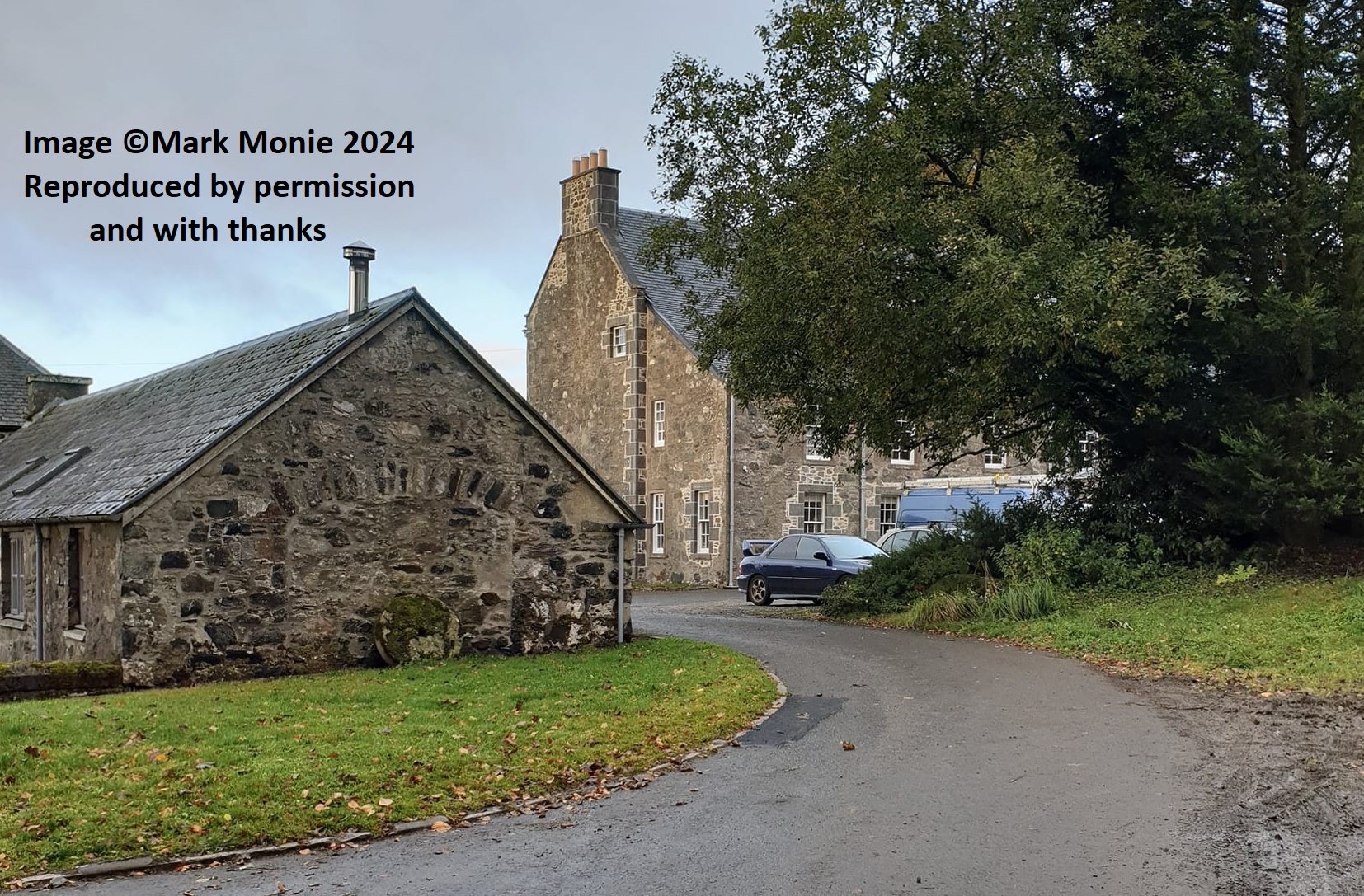Ashintully Castle

Ashintully Castle Details
Ashintully Castle, an occupied C16 tower house of Spaldings extended C17 and abandoned. Repaired and reoccupied C19
- Closest To: Bridge of Cally, Spittal of Glenshee
- Access: No Access
- Grid Reference: NO101612
Ashintully Castle, also known as Ashintully House, is a large occupied mansion hidden within a large esdtate on the southern foothills of the Grampian Mountains north-west of Blairgowrie and east of Pitlochry. The estate does offer sporting breaks and accommodation, although the castle itself is a private residence. It sits roughly midway between Strathardle and Glenshee, occupying a saddle of land between the two watercourses. The oldest part of the castle is a modest 16th century tower house, which has been extended by the addition of a large wing to the end of the main hall block of the tower house which also extends this to the rear.
The tower house is entered at ground floor level into the basement of a square tower containing the main stair to the first floor, and this lobby area leads to a small corridor accessing the two vaulted basement rooms. At first floor level, the main stair led to the great hall, which occupied most of the first floor. A winding stair in the thickness of the west gable led to the chambers above, and it is possible that – as today, the hall was separated by a wooden screen from this first floor lobby area. At second floor level a small chamber occupied the space above the main staircase, and there were probably two further chambers – the winding stair continued upwards to a further guard chamber at the top of the stair wing, and perhaps to a watch turret. A round turret now protrudes through the modern roofline which was originally attached to the north-east corner of the second floor of the main building. The additions, which date to the century, are accessed through openings cut in the north wall and the east gable of the hall block, matching the wing in height to the east, but a storey lower to the north (rear) of the building.
Above the doorway is carved the date 1583, and a heraldic panel above this bears the initials AS. Whilst it is tempting to associate this with Andrew Spalding of Ashintully, who was laird in 1587, the style of shield is later, and is more likely to record one of the charters granted to Andrew Spalding in the reign of Charles II – perhaps the new grant of 1678 which followed the resignation of his estates to the king. Comparitively little is recorded of the Spaldings or Ashintully. The Andrew who was laird in 1583 was beseiged and captured at Ashintully in 1587, perhaps at the urging of the earl of Atholl, who acted as cautioner for the abductors. David Spalding – perhaps his son – was charged with treasonably assisting a minor member of the Gowrie Conspiracy, but the case was dropped. He was later charged with stealing wood from the Earl of Mar. Later Spaldings rose in support of the Jacobite cause, and for this the estate became encumbered with debt, sequestrated by 1756 – and pursued repeatedly by its creditors. By 1783 the tower house was recorded as being “in ruins” on James Stobie’s map, and the Rutherford family had acquired an interest in the estate, being described as “purchasers” in July 1790. In 1818 a legal and financial dispute was resolved between the heirs of George and Daniel Spalding, those of James Rutherford and the estate of David Spalding, reflecting that it was many years before the financial affairs of the estate were resolved. This makes it seem likely that the castle was restored and extended in the 19th century by the Rutherford family, although James Rutherford may have made the old tower house habitable.
Become a supporter of my work to access a more detailed history